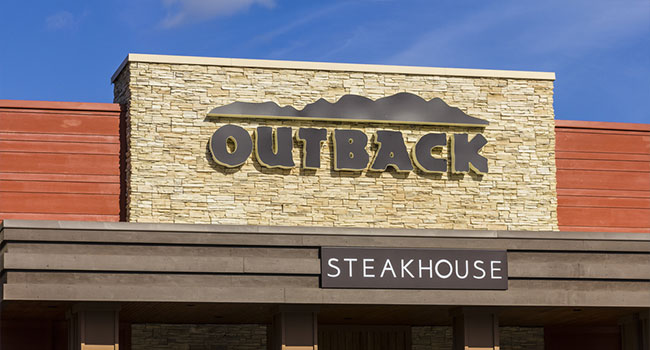
New Computer Vision Program Being Tested at Outback Steakhouse Location
As restaurants find new ways to measure employee performance and increase customer satisfaction, security companies like Presto Vision are offering artificial intelligence as the solution.
- By Haley Samsel
- Oct 22, 2019
More casual dining chains are considering artificial intelligence and surveillance technology as tools to monitor and improve employee performance. The most recent example: a restaurant group’s decision to try out computer vision program Presto Vision at an Outback Steakhouse location in the Portland, Oregon area.
The software analyzes footage from pre-existing surveillance cameras to track different sets of metrics over the course of a worker’s shift, WIRED reported. Those metrics include excessively long waits for customers, untidy lobbies, a lack of available hosts and the number of potential customers who leave without being seated and/or greeted, according to a press release from Presto.
The Outback Steakhouse pilot is focused on lobby analytics and may expand to other parts of the restaurant, such as back-of-house, dining areas and curbside service. At the end of each worker’s shift, managers will receive an email of an employee’s metrics that can help them determine issues with employee performance or where to shift resources during busy periods.
“With this product, restaurants can now have access to critical insights on how their stores actually work,” Rajat Suri, founder and CEO of Presto, said in a statement, comparing the metrics system to how e-commerce sites conduct business. “This helps them provide better service, operate more efficiently, and reduce overhead.”
In anticipation of criticism of the surveillance tech, Presto said in its announcement of the Outback partnership that “security and privacy are important aspects” of the system. Data captured by cameras is stored temporarily for analysis and automatically deleted after 30 days, according to the company. The software is not equipped with facial recognition, and does not track personally identifiable information on any individual.
More criticism has been levied about the potential implications of the system, which could lead to staff cuts or decreasing the amount of people on a shift due to the efficiencies discovered by Presto. But executives like Evergreen Restaurant Group CEO Jeff Jones are not seeing it that way, instead promoting Presto Vision as a way for restaurants to retain guests and improve the customer experience.
“Deeper guest interactions and superior hospitality are top priorities for us,” said Jones, whose group operates nearly 40 Outback locations, including the Portland pilot restaurant. “Presto Vision brings cutting edge computer vision technology to the restaurant industry for the first time in my experience. It has the potential to set new standards for service and operations at our franchise restaurants.”
About the Author
Haley Samsel is an Associate Content Editor for the Infrastructure Solutions Group at 1105 Media.